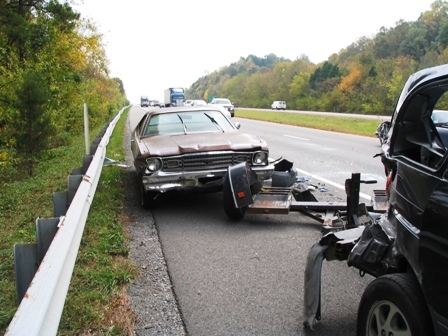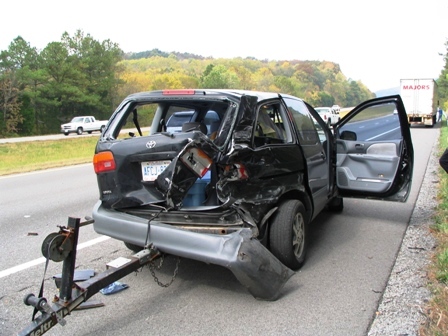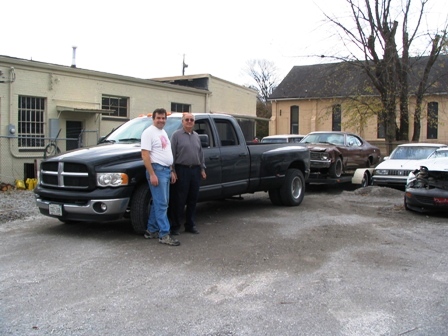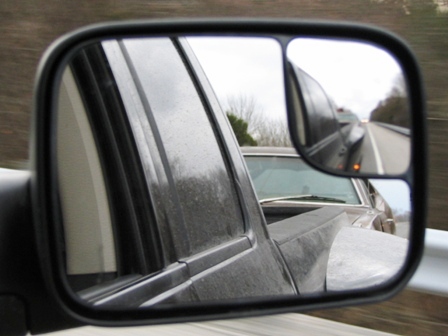Once the money has changed hands, how do you get it home? If you're buying a road-worthy vehicle, driving it home is usually the best and least expensive option. For those who must tow their vehicles home, you have three options: hire a transport service, tow it with a car trailer, tow it with a car dolly.
The transport service can be the most expensive or the most economical option, depending upon how far away is your car. If your car doesn't run, it will be even more expensive or not done by some transporters. Some services specialize in transporting cars. Others are flat-bed or enclosed trailers.
The safest option for bringing a car home is by car trailer. This is the one where you drive (or winch) the car onto a trailer and none of the car's wheels are on the road. You don't need to worry about whether your trailered car will fail in some way on the way home. However, since your trailer and its load are quite heavy, you need a substantial vehicle to do the towing. A compact pickup truck will probably not cut it. You will also need a trailer with brakes and a tow vehicle with controls to operate the trailer's brakes.
The most dangerous option (writing from experience) for bringing a car home is by car dolly. A car dolly is a two-wheel trailer where the towed vehicle's front tires ride on the trailer. This is dangerous for many reasons. The first is that tow vehicle is usually too light to tow a car trailer so the owner settles on a dolly instead. The second is that the loaded dolly doesn't put enough weight on the rear tires of the tow vehicle. The third is that there are too many pivot points. The fourth is that car dollies generally don't have brakes. Besides being dangerous, some jurisdictions do not allow car dollies which means that you are in the inconvenience of finding a car trailer anyway to get through that jurisdiction.
You can consider a trailer to be a pendulum just like the one in your grandfather clock. All pendulums have a natural frequency and will try to swing back and forth (oscillate) at their natural frequencies whenever possible. On a trailer, a small oscillation can easily become a major fishtail from which it is almost impossible to recover. Once a fishtail starts and the driver of the tow vehicle tries to slow down, the trailered vehicle will try to push the tow vehicle from side to side. If there is not enough weight on the tow vehicle's rear tires, the rear tires will break loose from being pushed around and a loss of control is inevitable. Higher speeds magnify the pendulum effect and your brakes will have to absorb the kinetic energy that increases with the square of speed (doubling your speed increases your kinetic energy 4 times).
If your only option is to use a car dolly, try to get one with trailer brakes. You need the trailer to share the braking load. Keep moderate speeds with a loaded dolly and avoid high speed turnpikes if at all possible. Plan your driving to minimize the use of brakes at all times. Check your owner's manual for factory recommendations for towing loads and speeds with a dolly. Keep to those moderate speeds because the factory had a very good reason to recommend them.
The wrong way to tow
After driving down to Tennessee to pick up a parts car the author bought on eBay with a car dolly, the Duster began to fishtail shortly after getting onto Interstate 24. Even though the Duster trailered fine on the backroads at speeds up to 50 mph, the car began to fishtail after just reaching 60 mph. The fishtailing did not improve when the author took his foot off the gas to coast down to a slower speed. The fishtailing kept getting worse and two cars spun out of control when the brakes were applied. Because the dolly did not have trailer brakes, the braking Sienna slowed down much faster than the Duster. In the process of doing so, the Duster spun around and was beside the Sienna (still attached with the dolly) as the two cars went out of control. After hitting the guard rail a few times, both cars stopped, with the Sienna still on the road in a position to be hit by the transport truck which was following them.
Luckily, there were no injuries other than a few bumps and one huge bruise to the author's ego. Everyone walked away from this collision but the Sienna and the dolly were write-offs. The Duster, which was purchased as a parts car, managed to survive with damage to the front fenders, grille, and right front wheel.
The Right Way to Tow
As the Duster was now in the author's name, he still had to retrieve it or dispose of it. There were no good options. Hiring a transport truck would have cost well over $1000 to bring home a $200 parts car. Renting a pickup truck and car trailer would have cost upwards of $800 in rental and fuel costs. However, one of the car club's members volunteered to drive with his truck and another member volunteered his trailer. You need something substantial to tow a car and trailer and the Dodge Ram 3500 with the Cummins turbo-diesel seemed to do it effortlessly.
Even the author had dollied even larger cars at similar similar speeds with the Sienna several times previously without any problems what-so-ever, this adventure went horribly wrong within minutes of getting on the interstate. Don't think it can't happen to you! Be extremely careful!







